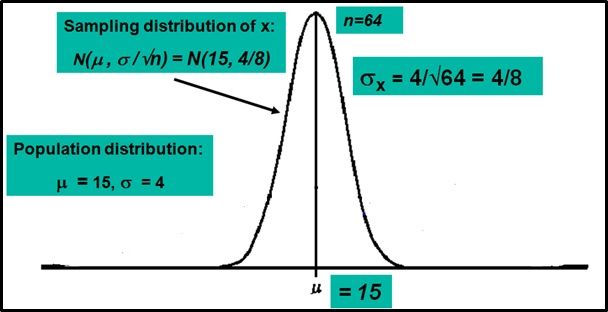Definition:
1. The central limit theorem states that if some certain conditions are satisfied, then the distribution of the arithmetic mean of a number of independent random variables approaches a normal distribution as the number of variables approaches infinity.
2. In simple words, If a random sample of n observations is selected from a population (any population), then when n is sufficiently large, the sampling distribution of x will be approximately normal.
(The larger the sample size, the better will be the normal approximation to the sampling distribution of x.)
Example 1:
A random sample of n=64 observations is drawn from a population with mean µ=15 and standard deviation σ = 4
1. E(X-bar) = E(µ) = 15 and SD(X-bar) = SD(X-bar) / √n = 4/8 = 0.5
2. The shape of the sampling distribution model for X-bar is approx. normal (By the central limit theorem) with mean E(X-bar) = 15 and SD (X-bar) = 0.5.

Example 2:
We are given that µ = 3, σ = 1.5, n = 160. There are 300 passes available for a rugby match, so the 160 students will be able to buy the passes for this match they want if allof them together ask for less than 300 tickets.
The probability for that is P(T < 300) = P(z < 300−160(3) √ 160 *1.5 ) = P(z < -3) = 0.00135
To Submit your assignment on central limit theorem please click the button below
SUBMIT ASSIGNMENT NOW!Sign up for free and get instant discount of 12% on your first order
Coupon: SHD12FIRST